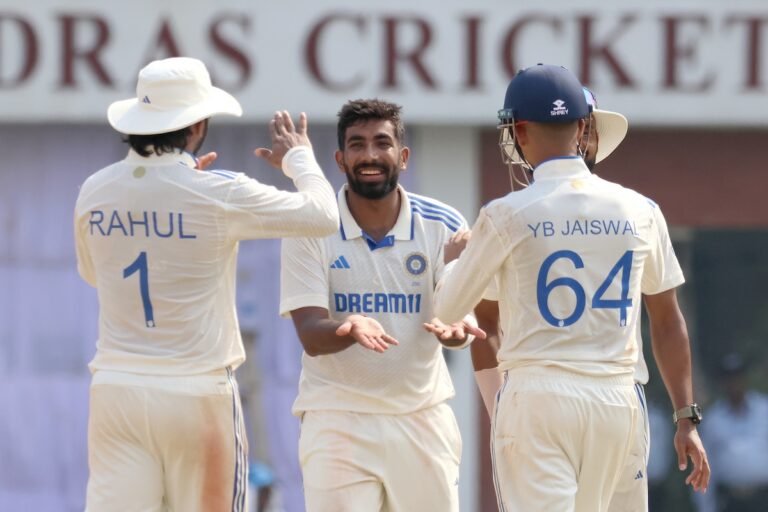The Impact of Cricket on National Sports Administration
Online Cricket ID, Play99exch: Cricket, with its roots deeply embedded in British colonial history, holds a significant place in the national sports administration of many countries. Introduced as a recreational activity among the British ruling elite, cricket evolved over time to become a symbol of national pride and identity for former colonies. Its historical significance lies in its role as a tool for social integration, cultural exchange, and the assertion of independence in post-colonial nations.
The history of cricket in national sports administration is intertwined with political movements and social change. The sport served as a platform for marginalized communities to challenge discriminatory practices and demand equal opportunities in sports. As nations gained independence, cricket became a unifying force, fostering a sense of national solidarity and pride among citizens. The legacy of cricket’s historical significance continues to shape the administration and development of sports at a national level, influencing policies, funding allocations, and grassroots initiatives.
The Evolution of Cricket as a Dominant Sport in National Sports Administration
Cricket has undeniably evolved to become a dominant sport within the realm of national sports administration. Its journey from a colonial pastime to a professional and widely popular sport has been marked by significant milestones and transformations. Over the years, cricket has captured the hearts of millions, transcending boundaries and uniting diverse communities under the shared passion for the game.
The rise of cricket as a dominant sport in national sports administration can be attributed to various factors, including its rich history, cultural significance, and the exceptional talent displayed by players. The sport’s ability to attract massive audiences, secure lucrative broadcasting deals, and generate substantial revenue has solidified its position as a key player in the realm of national sports administration. As cricket continues to thrive and adapt to the demands of the modern era, its influence on shaping policies, infrastructure development, talent nurturing, and overall success in national sports administration remains unparalleled.
The Influence of Cricket on Funding and Sponsorship in National Sports Administration
Cricket holds a significant influence on the funding and sponsorship landscape within national sports administration. The sport’s widespread popularity and dedicated fan base attract a multitude of sponsors looking to align themselves with the glamour and excitement associated with cricket. This heightened interest from corporate sponsors results in substantial financial investments being directed towards cricket programs, events, and athletes, ultimately bolstering the overall financial stability of national sports administration.
Additionally, cricket’s ability to attract diverse audiences and captivate viewers across various demographics enhances its appeal to potential sponsors seeking to reach a broad spectrum of consumers. The sport’s widespread reach through televised matches, digital platforms, and live events creates valuable marketing opportunities for sponsors to engage with fans on a large scale. These partnerships not only provide vital financial support to cricket programs but also contribute to the overall growth and sustainability of national sports administration through increased visibility and commercial opportunities.
The Role of Cricket in Shaping Policies and Regulations in National Sports Administration
Cricket, with its deep-rooted traditions and global popularity, has played a significant role in shaping policies and regulations within national sports administrations. The governance structures implemented in cricket have often served as a model for other sports, influencing decision-making processes and fostering transparency and accountability. The adherence to fair play, inclusivity, and ethical standards within cricket has led to the establishment of robust policies that aim to uphold the integrity of the sport and protect the rights of stakeholders.
Moreover, the regulatory frameworks developed in cricket have set benchmarks for monitoring and enforcing compliance across various aspects of sports administration. From anti-doping measures to financial regulations, the meticulous attention to detail within cricket’s governance has paved the way for the formulation of more stringent policies in national sports bodies. By prioritizing integrity and professionalism, cricket has catalyzed a shift towards higher standards of governance, ensuring that sports administrations operate with integrity and fairness at their core.
Cricket’s Impact on Infrastructure Development in National Sports Administration
One of the key areas where cricket has made a significant impact in national sports administration is the development of sports infrastructure. The sport’s popularity and demand have led to the construction of state-of-the-art stadiums, training facilities, and practice grounds across the country. These infrastructural developments not only benefit cricket but also have a trickle-down effect on other sports, providing athletes with top-notch facilities to train and compete.
Moreover, the investment in infrastructure for cricket has also boosted the economy through increased tourism, job creation, and revenue generation. The construction and maintenance of cricket stadiums and associated facilities have not only created employment opportunities but have also attracted both domestic and international visitors, contributing to the growth of the sports tourism industry. Additionally, the presence of modern infrastructure has elevated the overall standard of sports facilities in the country, enhancing the sporting experience for athletes and spectators alike.
The Contribution of Cricket to Talent Development and Grassroots Programs in National Sports Administration
Cricket plays a pivotal role in talent development and grassroots programs within national sports administration. The sport serves as a pathway for aspiring young athletes to showcase their skills and potential at various levels of competition. Through structured training programs and organized leagues, cricket provides a platform for talent identification and nurturing, giving promising individuals the opportunity to progress and excel in the sport.
Furthermore, cricket’s emphasis on grassroots programs helps in creating a strong foundation for the future of the sport. By engaging with local communities and schools, cricket promotes participation from a young age, instilling values of teamwork, discipline, and sportsmanship. This grassroots approach not only fosters a love for the game but also cultivates a pool of talent that can be harnessed and developed to represent the nation on a larger stage.
Cricket’s Effect on Media Coverage and Broadcasting Rights in National Sports Administration
Cricket’s widespread popularity has significantly impacted media coverage and broadcasting rights within the realm of national sports administration. With a large fan base and viewership, cricket garners immense attention from various media outlets, leading to extensive coverage across television, radio, online platforms, and print media. This heightened exposure not only amplifies the reach of the sport but also attracts significant investment from broadcasters and sponsors looking to capitalize on the sport’s mass appeal.
Moreover, the competitive nature and thrilling dynamics of cricket matches make them prime content for broadcasters seeking to attract viewers and advertisers. The pursuit of broadcasting rights for high-profile cricket events has resulted in lucrative deals that inject substantial funds into national sports administration, enabling the development of infrastructure, talent programs, and grassroots initiatives. As cricket continues to hold a prominent position in the sporting landscape, its effect on media coverage and broadcasting rights remains a crucial aspect of shaping the overall dynamics of national sports administration.
The Relationship Between Cricket and International Diplomacy in National Sports Administration
Cricket has undeniably become a key player in international diplomacy within the realm of national sports administration. The sport has transcended borders and united nations through friendly matches, tournaments, and bilateral series. The power of cricket to foster goodwill and strengthen diplomatic ties between nations cannot be overlooked.
Through cricket, countries have found a common ground to engage in friendly competition, build cultural exchanges, and promote mutual understanding. The sport has the unique ability to bring people together, regardless of their background or nationality, fostering a sense of unity and camaraderie on an international stage. Whether it’s through high-profile tournaments like the Cricket World Cup or friendly matches between neighboring countries, cricket has proven to be a valuable tool in promoting peace and cooperation between nations.
Cricket’s Influence on the Overall Success and Performance of National Sports Administration
When we delve into the realm of national sports administration, it becomes evident that cricket holds a significant influence on the overall success and performance of the governing bodies. The popularity and mass appeal of cricket play a pivotal role in shaping the dynamics of sports management at the national level.
Moreover, the financial contributions from cricket, whether through sponsorships, broadcasting rights, or ticket sales, provide a substantial boost to the funding of national sports administration. This financial stability allows for better infrastructure, talent development programs, and overall operational efficiency within the sports governing bodies, ultimately leading to enhanced success and performance across the board.
Future Trends and Challenges for Cricket in National Sports Administration
Looking ahead, the future of cricket in national sports administration presents various trends and challenges. One significant trend is the increasing globalization of the sport, leading to more international collaborations and competitions. This trend not only enhances the overall quality of the game but also boosts the reach and popularity of cricket on a global scale. However, this globalization also brings about challenges such as navigating the complexities of managing diverse cultural aspects and maintaining the integrity of the sport in different regions.
Additionally, the advancement of technology poses both opportunities and challenges for cricket in national sports administration. The utilization of data analytics, video technology, and virtual reality in coaching and performance analysis can revolutionize the way the game is played and understood. Yet, adapting to these technological advancements and integrating them seamlessly into the traditional aspects of cricket administration may prove to be a challenging task for sports authorities. Embracing and effectively leveraging technology will be crucial for staying competitive and relevant in the ever-evolving landscape of sports administration.
What is the historical significance of cricket in national sports administration?
Cricket has a long-standing history in national sports administration, often being one of the most popular and dominant sports in many countries.
How has cricket evolved as a dominant sport in national sports administration?
Over the years, cricket has gained popularity and has become a major part of national sports administration, with dedicated leagues, teams, and tournaments.
What is the influence of cricket on funding and sponsorship in national sports administration?
Cricket’s popularity often attracts significant funding and sponsorship deals, providing financial support to national sports administration.
How does cricket shape policies and regulations in national sports administration?
Cricket’s influence often leads to the development of specific policies and regulations within national sports administration to support the growth and success of the sport.
What is the impact of cricket on infrastructure development in national sports administration?
Cricket’s requirements for specific infrastructure often drive development and improvement of sports facilities within national sports administration.
How does cricket contribute to talent development and grassroots programs in national sports administration?
Cricket’s involvement in talent development and grassroots programs helps to nurture young players and support the growth of the sport at all levels.
What effect does cricket have on media coverage and broadcasting rights in national sports administration?
Cricket’s popularity often results in extensive media coverage and lucrative broadcasting rights deals, increasing exposure and revenue for national sports administration.
How is cricket related to international diplomacy in national sports administration?
Cricket can serve as a platform for international diplomacy, fostering relationships between countries through friendly competitions and international tournaments.
How does cricket influence the overall success and performance of national sports administration?
Cricket’s success and popularity can significantly impact the overall success and performance of national sports administration, attracting fans, sponsors, and revenue.
What are the future trends and challenges for cricket in national sports administration?
The future of cricket in national sports administration may involve technological advancements, changing demographics, and increased competition, presenting both opportunities and challenges for the sport.







